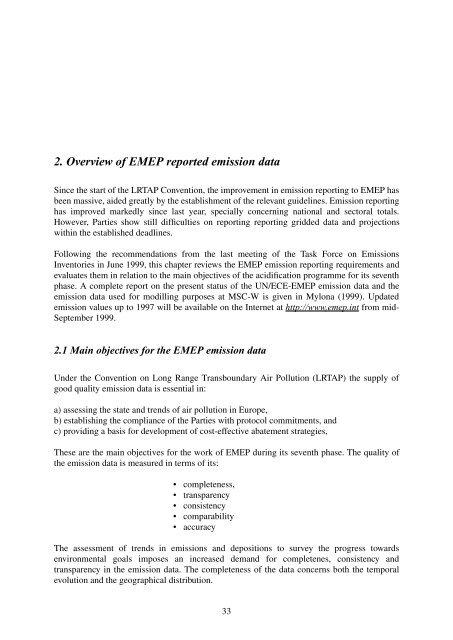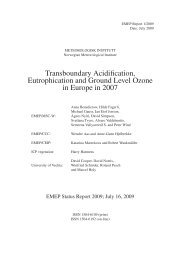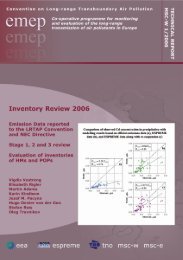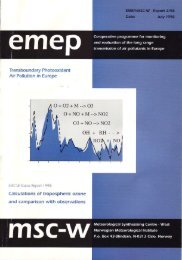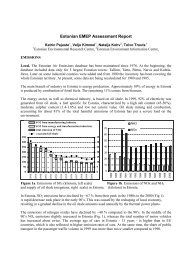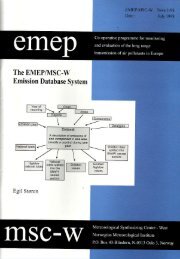ccc & msc-w - EMEP
ccc & msc-w - EMEP
ccc & msc-w - EMEP
You also want an ePaper? Increase the reach of your titles
YUMPU automatically turns print PDFs into web optimized ePapers that Google loves.
2. Overview of <strong>EMEP</strong> reported emission data<br />
Since the start of the LRTAP Convention, the improvement in emission reporting to <strong>EMEP</strong> has<br />
been massive, aided greatly by the establishment of the relevant guidelines. Emission reporting<br />
has improved markedly since last year, specially concerning national and sectoral totals.<br />
However, Parties show still difficulties on reporting reporting gridded data and projections<br />
within the established deadlines.<br />
Following the recommendations from the last meeting of the Task Force on Emissions<br />
Inventories in June 1999, this chapter reviews the <strong>EMEP</strong> emission reporting requirements and<br />
evaluates them in relation to the main objectives of the acidification programme for its seventh<br />
phase. A complete report on the present status of the UN/ECE-<strong>EMEP</strong> emission data and the<br />
emission data used for modilling purposes at MSC-W is given in Mylona (1999). Updated<br />
emission values up to 1997 will be available on the Internet at http://www.emep.int from mid-<br />
September 1999.<br />
2.1 Main objectives for the <strong>EMEP</strong> emission data<br />
Under the Convention on Long Range Transboundary Air Pollution (LRTAP) the supply of<br />
good quality emission data is essential in:<br />
a) assessing the state and trends of air pollution in Europe,<br />
b) establishing the compliance of the Parties with protocol commitments, and<br />
c) providing a basis for development of cost-effective abatement strategies,<br />
These are the main objectives for the work of <strong>EMEP</strong> during its seventh phase. The quality of<br />
the emission data is measured in terms of its:<br />
• completeness,<br />
• transparency<br />
• consistency<br />
• comparability<br />
• accuracy<br />
The assessment of trends in emissions and depositions to survey the progress towards<br />
environmental goals imposes an increased demand for completenes, consistency and<br />
transparency in the emission data. The completeness of the data concerns both the temporal<br />
evolution and the geographical distribution.<br />
33


